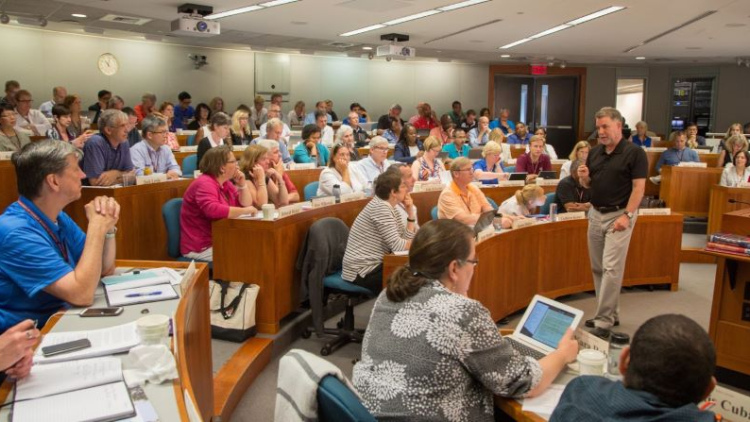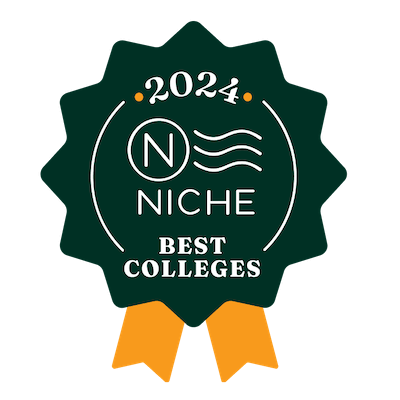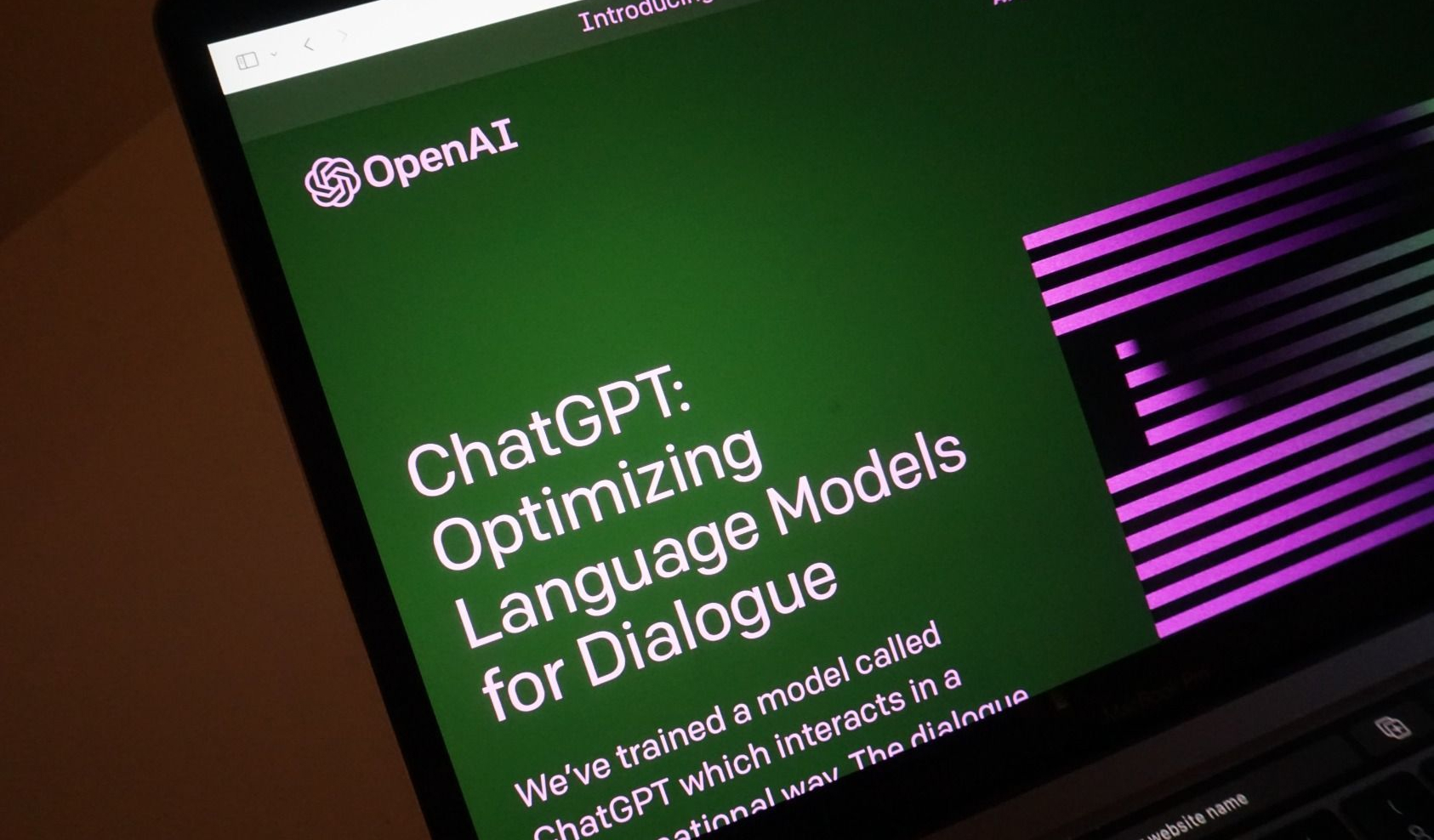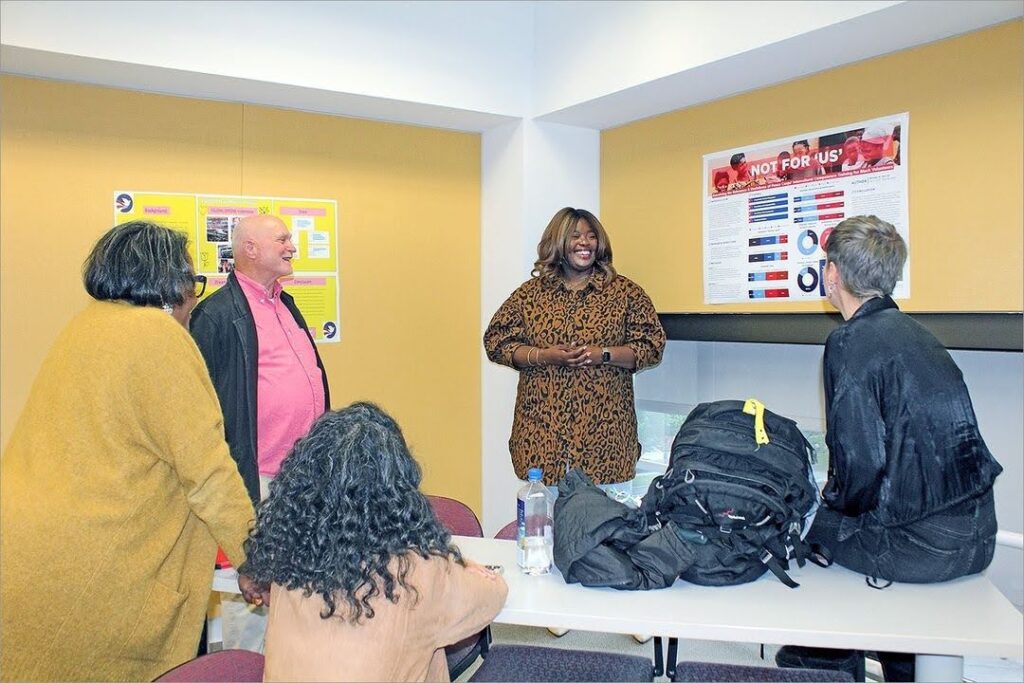

Online Course Development: A Roadmap
Designing and developing an effective online course involves careful planning and intentional decision-making. People who are new to online learning are often surprised that, as opposed to a straightforward process of “putting a course online,” the new modality challenges educators to transform content, activities, and their approach to interacting with students.
Many factors influence the time that is required to develop an online course, including: the maturity of the course materials and assignments, the type of instructional activities, and the faculty member’s knowledge of online environments and tools.
Following is a suggested process for planning and developing of an online course.
Phase 1: Preparing for Course Design
Activities:.
- Review course objectives to ensure they articulate the desired priorities and levels of student learning.
- Review alignment of course objectives with instructional activities and assessments to identify gaps.
Deliverables :
- First draft course map, including weekly topics, objectives and schedule for major course assignments
Phase 2: “Big Picture” Course Design
Activities :.
- “Chunk” course into weekly modules (or other desired unit)
- Articulate objectives for each module/unit
- Determine how major assignments and assessment fit into course schedule
- Consider how to translate typical course activities to maximize affordances of online environment and maximize student interaction
- Determine overall strategies for content delivery, instructional activities, and assessment
- Identify appropriate technologies and pursue required technical training
- Develop a schedule for course development
Phase 3: Module Prototype
- Determine structure of main menu and individual modules
- Design & develop one full module, including examples of all content types to be developed, assignment instructions and module text
- Evaluate prototype module and make any adjustments to course/module structure and project schedule.
Phase 4: Detailed Design and Development
- Complete detailed course map that identifies all components to each module: existing content, content to be produced, assignments, assessment activities
- Canvas components
- Media Components
- Assignment instructions
- Assessments
- Rubrics and/or performance criteria
- Set up Grade Center
- Set up timed release of materials, if desired
- Develop student introduction activity
Phase 5: Preparing to Launch – Testing and Facilitation Planning
- Test course components
- Develop explanation of how the course “works,” communication expectations & guidelines, and ways to get help
- Consider creating a welcome video and/or screencast course tour
Phase 6: Early Course Feedback
- Gather early term student feedback and make adjustments as possible
Phase 7: Develop Plan for Course Revision
(end of first term)
- Review student evaluations & feedback
- Review student performance results
- Identify revisions for second iteration
Harvard Bok Higher Education Teaching Certificate
Create a collaborative learning environment.
Explore Higher Education Teaching and its practices offered by Harvard’s Derek Bok Center for Teaching and Learning to create an engaging learning environment.

What You'll Learn
The Higher Education Teaching Certificate, inspired by the in-person seminar program currently offered by Harvard’s Derek Bok Center for Teaching and Learning, provides you with effective postsecondary education teaching methods. Over eight weeks, you’ll engage deeply with, and reflect on, your practices, portfolio, and journey in the higher education field. Guided by experts, you’ll explore various approaches to pedagogy, discover the most relevant research on how students learn, and broaden your range of teaching skills. Learn how to adopt a more conscious, collaborative, and refined approach to your teaching practice.
The course will be delivered via Get Smarter . By the end of the course, participants will be able to:
- Apply rapport-building techniques to create a positive, supportive, and inclusive postsecondary education learning environment
- Deliver an effective, memorable lesson that bridges the knowledge gap between yourself and your students
- Raise your institutional profile as a reflective teacher through effective third-level education teaching practices
- Implement practical strategies for classroom management and lesson planning
VIEW COURSE BROCHURE
Your Instructors

Robert A. Lue
Professor of Molecular and Cellular Biology at Harvard University Read full bio.

Adam Beaver
Director of Pedagogy and Practice, The Derek Bok Center for Teaching and Learning at Harvard University Read full bio.

Pamela Pollock
Director of Professional Development, The Derek Bok Center for Teaching and Learning at Harvard University Read full bio.

David Levari
Postdoctoral Research Associate at Harvard Business School Read full bio.
Course Outline
- Orientation module: Welcome to your Online Campus
- Module 1: How knowledge is constructed
- Module 2: How learning works
- Module 3: Building rapport
- Module 4: Lesson planning and delivery
- Module 5: Engaging students
- Module 6: Course and assignment design
- Module 7: Using feedback to improve your teaching
- Module 8: Teaching portfolio preparation
Learner Testimonial
“This course strengthened my approach to become a more reflective practitioner who employs the latest evidence-based practices in order to serve diverse learners. It provided much-needed pause and reflection as an integral part of my professional development. I refined my tools as an experienced educator, added new tools to my repertoire as a practitioner, and connected with professionals working in similar fields. We spent countless hours giving each other feedback and offering perspectives on materials presented by the instructors. The platform was easy to navigate and well-designed, utilizing the latest evidence-based principles for teaching and learning in the information age.”
Octaviano Merecias-Cuevas OHSU Lead Trainer, Center for Diversity and Inclusion
Earn Your Certificate
Enroll today in Harvard Bok Higher Education Teaching Certificate on GetSmarter.
Still Have Questions?
What are the learning requirements? How do I list my certificate on my resume? Learn the answers to these and more in our FAQs.
Related Courses
Open innovation.
Open innovation is a strategy that suggests the best ideas, solutions, and people necessary to solve your organization’s difficult problems may come from outside your company entirely.
Technology Entrepreneurship: Lab to Market
Join us to learn a systematic process for technology commercialization to bring cutting-edge innovations out of the lab and into the world.
Justice Today: Money, Markets, and Morals
Led by award-winning Harvard Professor Michael J. Sandel, professor of the popular HarvardX course Justice, this course will take a deep dive into various “needs” and whether they abuse market mechanisms.
Digital Engineering & Technology | Elearning Solutions | Digital Content Solutions

Enterprises
- Higher Education

- Custom Learning Interventions
- Simulated Learning Experiences
- Content Conversion Services
- Learning Consulting Services
- Staffing Solutions
- Courseware Development
- Editorial Services
- Assessment Services
- Cloud Security Services
- Cloud Application Services
- Cloud Advisory Services
- Cloud Infrastructure Services
- Cloud Managed Services
- AI Powered Learning Management System
- Adobe Experience Manager
- Business Analysis
- Web & Mobile Application Development
- Talent as a Service
- Production Services
- Prepress & Editorial services
- Subject Matter Expertise Services
- Accessibility Solutions
Workforce Learning
- Simulated learning experiences
Higher Ed & K12 Solutions
Technology solutions.
- AI Powered LMS
- Business Analysis as a Service
Digital content transformation
- Production services
- Prepress and Editorial services
- Accessibility solutions
Cloud Solutions
- Life At Hurix

How To Guides
- Point Of View
Whitepapers
Press releases, case studies, point of view, infographics.

A 6-Step Guide to Creating an Effective Online Course Structure for Higher-ed

The online education industry is growing today like never before, with the overall sector predicted to reach a whopping $325 billion by 2025 . Among the key reasons for this unprecedented growth include:
- The flexibility and convenience that students enjoy to learn anytime from anywhere
- The opportunity to interact with peers and instructors
- The lower cost/resources necessary to conduct a class
The trend has also given rise to several opportunities for instructors to explore various best practices for designing an online course structure. In this blog, we share a 6-step expert guide to creating an effective online course structure for higher-ed students.
Table of Contents:
- Six Steps to Creating an Effective Online Course Structure 1. Create an Outline for Your Online Course 2. Develop Well-Organized Bite-Sized Courses 3. Add Interactivity to Your Lessons 4. Ensure a User-Friendly Navigation 5. Incorporate Both Synchronous and Asynchronous eLearning Styles 6. Ask for Student Feedback Throughout the Course
In Conclusion
Six Steps to Creating an Effective Online Course Structure
1. Create an Outline for Your Online Course
Institutions must have a robust plan to develop valuable course content and material for higher-ed students. This plan must help you decide what the course is going to be about, the content it should include, and how you will deliver it. Among the things, you need to take care of here include-
1.1 Define learning goals and objectives – When designing an online course for higher-ed students, the first thing you need to do is finalize learning goals and objectives to allow you and your students to know what is expected of them when taking the course. Start by defining your long-term goals, which need to be specific, concise, and measurable at the same time.
1.2 Break it down into different sections/subjects – Plan your online course content and segregate it into different sections to create a course syllabus. A course outline should give your students an idea of the steps they need to take in order to complete the course.
1.3 Finalize the types of content (media) – Next, you must decide what type of content you will use to communicate learning to your students? Will you include only text-based content or media-based content such as images, video, and audio components?
2. Develop Well-Organized Bite-Sized Courses
Microlearning is an important concept in defining the success of online courses. It involves using short learning nuggets that are designed specifically for skill-based learning. Designing course content in smaller, bite-sized quantities also allows students to not get overwhelmed by information overload, thus setting up a much more conducive environment for them to succeed and finish the course.
3. Add Interactivity to Your Lessons
While classroom-based learning enables a large number of students to gather in a physical space and learn at the same time, the experience generally lacks interactivity and quickly becomes uninteresting. Therefore, it becomes important to leverage various interactive tools while creating an online course for higher-ed students. Some of the ways to do this include playing various audio clips or videos to engage students and help them retain more information.
Apart from this, you can also incorporate live quizzes in the lessons to assess your students’ knowledge. As an instructor, you need to remember that every student has a different learning style, and the course you design should appeal to all of them. It helps instructors assess learner understanding in real-time, thus allowing them to effectively measure both learner success and course effectiveness as a whole.
4. Ensure a User-Friendly Navigation
Online learners typically enjoy more freedom and control than the traditional classroom-based method because they can navigate the course on their own. This makes it important to design an online course that provides students with the right amount of freedom and control in navigation. The idea here is to resolve navigation-related issues as early as possible and enable students to explore and experiment while also allowing them to make their own decisions based on fixed parameters.
5. Incorporate Both Synchronous and Asynchronous eLearning Styles
Synchronous learning refers to when learning happens in real-time with an instructor or facilitator leading a discussion and encouraging student participation with the subject material. Synchronous learning can take place either in a physical classroom or virtually. This type of learning helps students resolve their doubts and get clarity on concepts from the instructor in real-time.
On the other hand, asynchronous learning is when students learn independently in their own time and pace. Developing good asynchronous eLearning content such as well-designed online courses is an excellent way to disseminate knowledge to higher-ed students in a remote environment. Offering flexibility and convenience to learn independently makes asynchronous eLearning a crucial component of your online course structure.
6. Ask for Student Feedback Throughout the Course
Continuous improvement is very important for helping instructors understand and develop their own skills in teaching online and adapting a course to students’ specific needs and preferences. The adaptability and flexibility of online courses allow for more expansive opportunities to adjust the course structure and content based on student feedback.
One of the excellent ways to do this is using anonymous surveys that can help instructors gauge and understand how students’ perspectives may change over time. Taking student input and feedback is especially helpful if an instructor is new to teaching online. It allows instructors to gain valuable insights into various challenges that may arise for students during online courses and address them proactively.
Creating the right course structure will help you design the perfect course that addresses and meets the needs of learners. Following these best practices will enhance your chances of success in creating effective and engaging online courses for students, thus turning them into more active learners.
Need to know more about our Products & Services ? Drop us a Note.

Senior Vice President – Business Development Over 25 years of experience in the edtech and workforce learning industry with strong skills in Business Development, Customer Relationship Management (CRM) and Strategy.
Collaborative Course Development for Online Courses
- Published: 19 January 2007
- Volume 32 , pages 35–47, ( 2007 )
Cite this article

- Haixia Xu 1 &
- Libby V. Morris 1
1331 Accesses
43 Citations
Explore all metrics
Developing a course for online instruction requires content knowledge and understanding of the interactivity, technological requirements, and possibilities in the asynchronous environment. Using a case study method, the researchers investigated the development of an online humanities course by a team of faculty and instructional designers. Data were collected through observation of face-to-face planning meetings, document analysis of group postings at the online site, and interviews with the team members. Using Berge’s typology of online facilitator roles and Stark and Luttuca’s framework on academic plans, this study examined the roles assumed by team members and the curricular decisions.
This is a preview of subscription content, log in via an institution to check access.
Access this article
Price includes VAT (Russian Federation)
Instant access to the full article PDF.
Rent this article via DeepDyve
Institutional subscriptions
Similar content being viewed by others

Online learning in higher education: exploring advantages and disadvantages for engagement

The impact of artificial intelligence on learner–instructor interaction in online learning

A literature review: efficacy of online learning courses for higher education institution using meta-analysis
Berge, Z. L. (1995). Facilitating computer conferencing: Recommendations from the field. Educational Technology, 35 , 22–30.
Google Scholar
Boettcher, J. V., & Conrad, R. M. (1999). Faculty guide for moving teaching and learning to the web . Phoenix, AZ: League for Innovation in the Community College.
Byun, H. P., Hallett, K., & Essex, C. (2000). Supporting instructors in the creation of online distance education courses: Lessons learned. Educational Technology, 40 (5), 57–60.
Carnevale, D. (2000, August 4). Turning traditional courses into distance education. Chronicle of Higher Education, 46 (48), A37–A38.
Charmaz, K. (2000). Grounded theory: Objectivist and constructivist methods. In N. K. Denzin & Y. S. Lincoln (Eds.), Handbook of qualitative research (2nd ed., pp. 509–535). Thousand Oaks, CA: Sage.
Coffey, A., & Atkinson, P. (1996). Making sense of qualitative data: Complementary research strategies . Thousand Oaks, CA: Sage.
Creswell, J. W. (1998). Qualitative inquiry and research design: Choosing among five traditions . Thousand Oaks, CA: Sage.
Denzin, N. K., & Lincoln, Y. S. (Eds.) (1999). Handbook of qualitative research . Thousand Oaks, CA: Sage.
Fredericksen, E., Pickett, A., Shea, P., Pelz, W., & Swan, K. (2000). Factors influencing faculty satisfaction with asynchronous teaching and learning in the SUNY Learning Network. The Journal of Asynchronous Learning Networks, 4 (3), Retrieved May 25, 2004 at http://www.sloan-c.org/publications/jaln/v4n3/v4n3_fredericksen.asp
Kang, S. (2001). Toward a collaborative model for the design of web-based courses. Educational Technology, 41 (2), 22–30.
LeCompte, M. D., & Priessle, J. (1993). Ethnography and qualitative design in education research (2nd ed.). San Diego, CA: Academic.
Lincoln, Y. S., & Guba, E. G. (1985). Naturalistic inquiry . Beverly Hills, CA: Sage.
Liu, M. C. (2001). A systematic web-course development process: User-centered requirements. Educational Technology, 41 (6), 15–22.
Luck, A. (2001). Developing courses for online delivery: One strategy. The Technology Source, January–February. Retrieved on May 25, 2004 at http://technologysource.org/article/developing_courses_for_online_delivery/
Meyen, E. L., Tangen, P., & Lian, C. H. T. (1999). Developing online instruction: Partnership between instructors and technical developers. Journal of Special Education Technology, 14 (1), 18–31.
Moore, M. G., & Kearsley, G. (1996). Distance education: A systems view . Belmont, CA: Wadsworth.
National Center for Educational Statistics (1999). Distance education at postsecondary education institutions 1997–1998, NCES 2000-013 . Washington, DC: Author.
National Center for Educational Statistics (2003). Distance education at postsecondary education institutions: 2000–2001. NCES 2003-017 . Washington, DC: Author.
Palloff, R. M., & Pratt, K. (1999). Building learning communities in cyberspace: Effective strategies for the online classroom . San Francisco, CA: Jossey-Bass.
Palloff, R. M., & Pratt, K. (2001). Lessons from the cyberspace classroom: The realities of online teaching . San Francisco, CA: Jossey-Bass.
Patton, M. Q. (2002). Qualitative research and evaluation methods (3rd ed.). Thousand Oaks, CA: Sage.
Rosenblum, J. (2000, March). Design and development of online courses: Faculty working in collaboration. Syllabus Magazine, 13 (7), 5–6.
Schneider, H. (1999). Faculty concerns about developing web-based courses. Journal Instruction Delivery Systems, 13 (2), 21–24.
Stark, J. S., & Lattuca, L. R. (1997). Shaping the college curriculum: Academic plans in action . Boston, MA: Allyn and Bacon.
Torrisi, G. A., & Davis, G. A. (2000). Online learning as a catalyst for reshaping practice: The experience of some academics developing online learning materials. The International Journal for Academic Development, 5 , 166–176.
Article Google Scholar
White, C. (2000). Collaborative online course development: Converting correspondence courses to the web. Educational Technology, 40 (6), 58–60.
Wolcott, L. L. (1993). Faculty planning for distance teaching. American Journal of Distance Education, 7 (1), 26–36.
Yin, R. K. (1994). Case study research: Design and methods (2nd ed.). Thousand Oaks, CA: Sage.
Download references
Author information
Authors and affiliations.
Institute of Higher Education, University of Georgia, Athens, GA, USA
Haixia Xu & Libby V. Morris
You can also search for this author in PubMed Google Scholar
Corresponding author
Correspondence to Haixia Xu .
Additional information
is a Ph.D. candidate in the Institute of Higher Education at the University of Georgia. Her research interests include policy aspects of distance education, comparative higher education, qualitative research methodology, and assessment and evaluation.
Libby V. Morris
is the Director of the Institute of Higher Education at the University of Georgia. She holds the Ph.D. degree from the University of North Carolina, Chapel Hill. Her research interests include evaluation and assessment, instructional technology, and educational demographics.
Rights and permissions
Reprints and permissions
About this article
Xu, H., Morris, L.V. Collaborative Course Development for Online Courses. Innov High Educ 32 , 35–47 (2007). https://doi.org/10.1007/s10755-006-9033-5
Download citation
Published : 19 January 2007
Issue Date : June 2007
DOI : https://doi.org/10.1007/s10755-006-9033-5
Share this article
Anyone you share the following link with will be able to read this content:
Sorry, a shareable link is not currently available for this article.
Provided by the Springer Nature SharedIt content-sharing initiative
- online education
- course development
- faculty roles
- Find a journal
- Publish with us
- Track your research
Online learning: What next for higher education after COVID-19?

Online learning could be used to revolutionize education for the good. Image: Unsplash/Emmanuel Ikwuegbu
.chakra .wef-1c7l3mo{-webkit-transition:all 0.15s ease-out;transition:all 0.15s ease-out;cursor:pointer;-webkit-text-decoration:none;text-decoration:none;outline:none;color:inherit;}.chakra .wef-1c7l3mo:hover,.chakra .wef-1c7l3mo[data-hover]{-webkit-text-decoration:underline;text-decoration:underline;}.chakra .wef-1c7l3mo:focus,.chakra .wef-1c7l3mo[data-focus]{box-shadow:0 0 0 3px rgba(168,203,251,0.5);} Muhammad Sohail

.chakra .wef-9dduvl{margin-top:16px;margin-bottom:16px;line-height:1.388;font-size:1.25rem;}@media screen and (min-width:56.5rem){.chakra .wef-9dduvl{font-size:1.125rem;}} Explore and monitor how .chakra .wef-15eoq1r{margin-top:16px;margin-bottom:16px;line-height:1.388;font-size:1.25rem;color:#F7DB5E;}@media screen and (min-width:56.5rem){.chakra .wef-15eoq1r{font-size:1.125rem;}} Education is affecting economies, industries and global issues

.chakra .wef-1nk5u5d{margin-top:16px;margin-bottom:16px;line-height:1.388;color:#2846F8;font-size:1.25rem;}@media screen and (min-width:56.5rem){.chakra .wef-1nk5u5d{font-size:1.125rem;}} Get involved with our crowdsourced digital platform to deliver impact at scale
Stay up to date:.
Listen to the article
- Higher education institutions worldwide faced challenges when switching to online learning due to the COVID-19 pandemic.
- However, the experience highlighted how online learning could make education more engaging and accessible for many students.
- Lecturers and teachers should embrace the opportunities offered by digital distance learning to revolutionize education for the better.
Prior to the pandemic, very few students had the chance to study online. As a digital dreamer for Education 4.0 , my dream for the future of higher education had long involved a shift from the university being a physical location to a digital one – meaning you can study whenever and wherever you were.
Then COVID-19 forced higher education institutions (HEI) to move to digital distance learning all over the world. According to UNESCO , 194 countries and regions temporarily closed their educational institutions due to the pandemic, affecting more than 1.5 billion students worldwide.
But the process wasn't easy due to a range of issues including IT problems, internet access and lack of knowledge around digital teaching resources. However, with careful planning and implementation, online learning can make university education more affordable, accessible, interactive, and student-centered.
COVID-19 a 'steep learning curve' for lecturers
The Organisation for Economic Co-operation and Development's Higher Education Institution study highlighted how lecturers faced a steep learning curve when adapting to new teaching technologies at the start of the pandemic.
They suddenly had to record lectures, create learning resources, organize online classrooms and hold live sessions. For some it was easy, but not for others; they learned to teach online by actively doing so due to circumstance.
Inside Higher Ed's annual report found that half of the professors surveyed agree that online learning is an " effective method of teaching " and many instructors are concerned that their engagement with students has diminished thanks to the shift to online learning.
Academic staff also reported more stress and work-related pressure , more out-of-hours work and too much bluescreen engagement.
Even so, this compassionate teaching style and the sense of solidarity between lecturers and students should be valued and nurtured throughout university teaching, online or off.
From a student's point of view, remote learning often works well, especially if we consider students’ financial and maintenance costs.
But it can also prove to be a loss, if students need face-to-face learning, to complete laboratory work, or even just have social contact on the campus.
Online learning can be more productive
During the pandemic, many academic staff realized that dividing teaching into multiple small learning activities – such as mini-lectures, group discussions, class polls and pop-up quizzes – could be more productive.
New digital skills and technology played key roles in transforming traditional classrooms into hybrid ones. However, it must be remembered that such blended teaching methods increased both working hours and stress levels in teaching staff.
As such, teaching staff should have their own autonomy to design their courses. Otherwise, universities could end up creating a blended education environment, but without the quality of education.
COVID disruption to education
Pandemic undoubtedly disrupted the whole education sector and prompted academic staff and students to change their working, learning and even living conditions.
In addition, there are concerns that the digital divide among university students has increased, due to varying access to online platforms and services.
The disruption has also had a potential financial impact. According to McKinsey & Company, global costs from pandemic-related learning delays could reach $1.6 trillion annually by 2040, or 0.9% of the world's GDP.

Technology can revolutionize learning for good
As an Innovation and Digitalization Researcher, I have observed that there is massive potential for using technology to deepen and support learning outside the classroom.
The pandemic forced us to define what engagement really means in the classroom, showing us how students could be more creative and how a creative exam assessment can take the place of a traditional one.
Regardless of where the class takes place – in person, online, or through hybrid learning – the key priorities for HEIs should remain student engagement and the learning experience.
It is important for us to acknowledge what’s happening around us and what resources are available to support student learning. Technology isn’t just a disruptor, but an enabler.
Since COVID-19, I have been effectively using a number of such tools in my classes to make the best pedagogical practices, including Moodle , Microsoft , Google Education , Screencast-O-Matic , Miro , Zoom , and H5P.
According to the Online College Students 2022 report , 87% of undergraduate and graduate online students agreed or strongly agreed that online education was worth the cost. In 2020, most likely due to COVID-19, 73% of students were considered online or partially online, compared to 33% in 2017.
Why we should embrace online learning
Undoubtedly, HEIs have learned an invaluable lesson over the past few years. Some may think that COVID-19 learning was not good enough , but it would be a shame to go back to an absolute face-to-face learning environment at the higher education level.
For at least the next couple of years, universities will have to deal with some of the toughest circumstances they have ever encountered due to COVID-19.
Yet they can also embrace the changes brought by online learning and transform higher education for the better.
Don't miss any update on this topic
Create a free account and access your personalized content collection with our latest publications and analyses.
License and Republishing
World Economic Forum articles may be republished in accordance with the Creative Commons Attribution-NonCommercial-NoDerivatives 4.0 International Public License, and in accordance with our Terms of Use.
The views expressed in this article are those of the author alone and not the World Economic Forum.
The Agenda .chakra .wef-n7bacu{margin-top:16px;margin-bottom:16px;line-height:1.388;font-weight:400;} Weekly
A weekly update of the most important issues driving the global agenda
.chakra .wef-1dtnjt5{display:-webkit-box;display:-webkit-flex;display:-ms-flexbox;display:flex;-webkit-align-items:center;-webkit-box-align:center;-ms-flex-align:center;align-items:center;-webkit-flex-wrap:wrap;-ms-flex-wrap:wrap;flex-wrap:wrap;} More on Education and Skills .chakra .wef-nr1rr4{display:-webkit-inline-box;display:-webkit-inline-flex;display:-ms-inline-flexbox;display:inline-flex;white-space:normal;vertical-align:middle;text-transform:uppercase;font-size:0.75rem;border-radius:0.25rem;font-weight:700;-webkit-align-items:center;-webkit-box-align:center;-ms-flex-align:center;align-items:center;line-height:1.2;-webkit-letter-spacing:1.25px;-moz-letter-spacing:1.25px;-ms-letter-spacing:1.25px;letter-spacing:1.25px;background:none;padding:0px;color:#B3B3B3;-webkit-box-decoration-break:clone;box-decoration-break:clone;-webkit-box-decoration-break:clone;}@media screen and (min-width:37.5rem){.chakra .wef-nr1rr4{font-size:0.875rem;}}@media screen and (min-width:56.5rem){.chakra .wef-nr1rr4{font-size:1rem;}} See all

AI is changing the shape of leadership – how can business leaders prepare?
Ana Paula Assis
May 10, 2024

From virtual tutors to accessible textbooks: 5 ways AI is transforming education
Andrea Willige

These are the top ranking universities in Asia for 2024
May 8, 2024

Globally young people are investing more than ever, but do they have the best tools to do so?
Hallie Spear
May 7, 2024

Reskilling Revolution: The Role of AI in Education 4.0

Why investing in people is essential to revive growth: Key quotes from leaders at the #SpecialMeeting24
Gayle Markovitz and Kate Whiting
May 2, 2024
Education Leadership (online)

Graduate Program
The Master’s in Education (Ed.M.) prepares students with the skills needed to change the world through education. The online Master’s in Education Leadership is a part-time, two-year Ed.M. program from the Harvard Graduate School of Education with Higher Education and PreK-12 pathways. The program is specifically designed for working education professionals who bring at least seven years of relevant or transferrable work experience. Through this program, students will strengthen the invaluable skills they’ve already developed and develop the tools to propel themselves to new leadership opportunities and to even greater impact.
- Course Design
Advancing Online Graduate Education: Integrating Quality Matters Feedback to Enhance Course Templates
- May 8, 2024
- Cheryl Oberlin, MEd
In the dynamic landscape of online education, the University of Florida’s College of Journalism and Communications online graduate programs (UF CJC Online) stands at the forefront of innovation and quality. With a commitment to ensuring educational excellence and student success, in 2020, UF CJC Online developed a comprehensive course design strategy to elevate its online courses, a mission mandated by the State University System of Florida’s 2025 Strategic Plan for Online Education.
The state mandate established the goal of quality but allowed institutions to develop their own strategies. This article outlines how UF CJC Online developed a common Canvas course template based on best practices that meet or exceed the state’s directive. Offering a master’s degree in mass communications with six concentrations (digital strategy, global strategic communications, public interest communications, public relations, social media, and web design) and four graduate certificates (audience analytics, global strategic communications, social media, and web design), UF CJC Online has been in operation since 2012 and caters to a diverse cohort of 800 graduate students.
Quality matters: A benchmark for excellence
To meet the ambitious quality standards set by the State of Florida, UF CJC Online subscribed to Quality Matters (QM), an organization specializing in quality assurance for online education. QM’s robust framework, encapsulated in the QM Rubric, evaluates various facets of online course design through eight categories, including learning objectives, alignment, assessment strategies, instructional materials, learner interaction, course technology, learner support, accessibility, and usability. By developing the course template to meet QM standards, UF CJC Online aims to create a more engaging and effective learning environment so students have clear learning objectives, appropriate assessments and learning activities, and high-quality instructional materials.
Development and implementation of the course template
Initially challenged with meeting the state’s mandate and QM standards, a UF CJC Online review team discovered that the existing course offerings did not meet expectations. In response, UF CJC Online built an Instructional Design (ID) team and developed a standardized yet adaptable framework for all online courses. Their efforts fostered an environment conducive to innovation and engagement, driven by curriculum development and tailored to meet the dynamic needs of students. Embracing a student-centric philosophy, the program prioritized accessibility, interactivity, and flexibility to empower learners to pursue their academic goals.
These efforts culminated a meticulously designed course template that is the backbone of the program’s online offerings. The template features an intuitive layout and essential components such as a syllabus, clear assignment guidelines, feedback and grading policies, detailed discussion forums, and links to student support services. It includes institutional and college policies, plus support service resources to ensure that students and instructors have easy access to vital information, fostering both a sense of community and compliance. The template, housed in Canvas, is easy to update to reflect resource and content information changes. In addition, the comprehensive template equips instructors with essential tools, eliminates the need for them to create courses from scratch, and allows them to dedicate their time and expertise to delivering engaging and impactful courses.
Enhancing student experience and learning outcomes
At UF CJC Online, implementing a course template has been transformative as it significantly enhances student success by delivering a consistent learning experience. Further, a cohesive, intuitive, and strategic online learning environment allows students to be actively drawn into the course content, fosters deeper engagement in the online classroom, and facilitates the journey toward achieving the learning objectives.
The transparent communication of course goals, assessments aligned with objectives, and access to top-tier instructional materials and support resources ensures a holistic and enriching learning experience. Notably, since the implementation of the course template, UF CJC Online has observed a remarkable 25% increase in course completion rates, underscoring the tangible impact of its commitment to quality education.
Quality matters course review process
Each course within the UF CJC Online program undergoes a meticulous review process facilitated by a peer-review team established through QM. The course review team assesses each course against the QM Rubric in a collegial, collaborative process and generates a detailed report that provides valuable feedback in each of the eight areas for course improvement. The course template is a key factor in the QM course review process as it ensures consistency in course design.
The process of integrating feedback from QM course reviews into the course templates is systematic and reflective:
a. Analyzing the c ourse r eview r esults: The ID team conducts a thorough analysis of the feedback to discern the strengths and weaknesses of the current course design.
b. Prioritizing a reas for i mprovement: They identify key areas where modifications to the course template can significantly enhance student learning and engagement.
c. Redesigning course components: They make any necessary changes to the course template to address the gaps highlighted in the QM Course Reviews.
Continuous improvement and customization
Incorporating QM’s feedback into a course template is not a static process but a dynamic, ongoing improvement cycle. This iterative approach ensures that the program remains in sync with the latest best practices in online education and is responsive to the changing needs of students and instructors. While much of the template is standardized, certain aspects of the QM Course Review feedback necessitate customization for each course. Some examples of feedback implemented from official QM Course Reviews include:
- Creating an instructional navigation video for Canvas to facilitate students’ understanding of the platform’s features and functionalities.
- Clearly delineating the structure and significance of each course to ensure students comprehend its relevance to their degree or certificate program.
- Establishing transparent feedback policies and timelines for assignment evaluations to inform students when to expect instructor feedback.
- Implementing comprehensive privacy and accessibility policies for all course tools to ensure equitable access to course materials for all students.
- Identify and communicate the technical skills necessary for successful course participation to prepare students.
- Specifying the technical requirements, including equipment and software needs, essential for the course to help students prepare accordingly.
- Incorporating an alignment map that connects Course Learning Objectives (CLOs), Module Learning Objectives (MLOs) and learning activities to illustrate their interconnectedness and relevance to student learning.
- Providing direct links to student support services encompassing mental health resources and technical assistance that offer learners readily accessible assistance.
- Maintaining consistent graphics throughout the template to enhance navigation and enable students to locate various course elements efficiently.
- Allowing the ID team to take a tailored approach to ensure that each course, while adhering to a standardized template, also addresses the unique requirements and characteristics that define it.
Challenges and future directions
While implementing the QM-informed course template has been largely successful, it has not been without challenges. One of the main hurdles has been ensuring the templates remain flexible enough to accommodate the diverse needs and andragogical approaches of different courses and instructors. Additionally, the continuous process of gathering and integrating feedback requires a significant investment of time and resources throughout the year.
Looking forward, UF CJC Online is committed to further refining its course template based on ongoing QM reviews and feedback from students and instructors. The goal is to create a living document that evolves with the changing landscape of online education and adopts the highest quality standards.
Continuing improvement
Over the last five years, the University of Florida’s College of Journalism and Communications has demonstrated a commitment to enhancing the quality and effectiveness of its online graduate program by integrating Quality Matters standards and feedback into a course template. This process has been instrumental in ensuring a consistent, high-quality learning experience. Through continuous improvement and adherence to QM standards, UF CJC Online positions itself as a leader in online education and ensures that all courses will meet the State of Florida’s mandate by achieving QM certification by the end of 2025.
Cheryl Oberlin is the assistant director for UF CJC Online. She earned her MEd, MBA in project management and MA in English composition and rhetoric from Wright State University in Dayton, OH. She has taught personal branding and digital reputation management, in addition to mass communication teaching at the University of Florida since 2021. Before that, she taught entrepreneurship at Wright State University, composition and business writing at Sinclair Community College, and composition and speech at Edison State Community College. She has been associated with Quality Matters, Inc., since 2007. Oberlin’s passion for helping students succeed in higher education is evidenced by her accomplishments in designing quality, learner-centered online courses.
Stay Updated with Faculty Focus!
Get exclusive access to programs, reports, podcast episodes, articles, and more!
- Opens in a new tab
Welcome Back
Username or Email
Remember Me
Already a subscriber? log in here.
Setting a new bar for online higher education
The education sector was among the hardest hit by the COVID-19 pandemic. Schools across the globe were forced to shutter their campuses in the spring of 2020 and rapidly shift to online instruction. For many higher education institutions, this meant delivering standard courses and the “traditional” classroom experience through videoconferencing and various connectivity tools.
The approach worked to support students through a period of acute crisis but stands in contrast to the offerings of online education pioneers. These institutions use AI and advanced analytics to provide personalized learning and on-demand student support, and to accommodate student preferences for varying digital formats.
Colleges and universities can take a cue from the early adopters of online education, those companies and institutions that have been refining their online teaching models for more than a decade, as well as the edtechs that have entered the sector more recently. The latter organizations use educational technology to deliver online education services.
To better understand what these institutions are doing well, we surveyed academic research as well as the reported practices of more than 30 institutions, including both regulated degree-granting universities and nonregulated lifelong education providers. We also conducted ethnographic market research, during which we followed the learning journeys of 29 students in the United States and in Brazil, two of the largest online higher education markets in the world, with more than 3.3 million 1 Integrated Postsecondary Education Data System, 2018, nces.ed.gov. and 2.3 million 2 School Census, Censo Escolar-INEP, 2019, ensobasico.inep.gov.br. online higher education students, respectively.
We found that, to engage most effectively with students, the leading online higher education institutions focus on eight dimensions of the learning experience. We have organized these into three overarching principles: create a seamless journey for students, adopt an engaging approach to teaching, and build a caring network (exhibit). In this article, we talk about these principles in the context of programs that are fully online, but they may be just as effective within hybrid programs in which students complete some courses online and some in person.
Create a seamless journey for students
The performance of the early adopters of online education points to the importance of a seamless journey for students, easily navigable learning platforms accessible from any device, and content that is engaging, and whenever possible, personalized. Some early adopters have even integrated their learning platforms with their institution’s other services and resources, such as libraries and financial-aid offices.
1. Build the education road map
In our conversations with students and experts, we learned that students in online programs—precisely because they are physically disconnected from traditional classroom settings—may need more direction, motivation, and discipline than students in in-person programs. The online higher education programs that we looked at help students build their own education road map using standardized tests, digital alerts, and time-management tools to regularly reinforce students’ progress and remind them of their goals.
Brazil’s Cogna Educação, for instance, encourages students to assess their baseline knowledge at the start of the course. 3 Digital transformation: A new culture to shape our future , Kroton 2018 Sustainability Report, Kroton Educacional, cogna.com.br. Such up-front diagnostics could be helpful in highlighting knowledge gaps and pointing students to relevant tools and resources, and may be especially helpful to students who have had unequal educational opportunities. A web-based knowledge assessment allows Cogna students to confirm their mastery of certain parts of a course, which, according to our research, can potentially boost their confidence and allow them to move faster through the course material.
At the outset of a course, leaders in online higher education can help students clearly understand the format and content, how they will use what they learn, how much time and effort is required, and how prepared they are for its demands.
The University of Michigan’s online Atlas platform, for instance, gives students detailed information about courses and curricula, including profiles of past students, sample reports and evaluations, and grade distributions, so they can make informed decisions about their studies. 4 Atlas, Center for Academic Innovation, University of Michigan, umich.edu. Another provider, Pluralsight, shares movie-trailer-style overviews of its course content and offers trial options so students can get a sense of what to expect before making financial commitments.
Meanwhile, some of the online doctoral students we interviewed have access to an interactive timeline and graduation calculator for each course, which help students understand each of the milestones and requirements for completing their dissertations. Breaking up the education process into manageable tasks this way can potentially ease anxiety, according to our interviews with education experts.
2. Enable seamless connections
Students may struggle to learn if they aren’t able to connect to learning platforms. Online higher education pioneers provide a single sign-on through which students can interact with professors and classmates and gain access to critical support services. Traditional institutions considering a similar model should remember that because high-speed and reliable internet are not always available, courses and program content should be structured so they can be accessed even in low-bandwidth situations or downloaded for offline use.
The technology is just one element of creating seamless connections. Since remote students may face a range of distractions, online-course content could benefit them by being more engaging than in-person courses. Online higher education pioneers allow students to study at their own pace through a range of channels and media, anytime and anywhere—including during otherwise unproductive periods, such as while in the waiting room at the doctor’s office. Coursera, for example, invites students to log into a personalized home page where they can review the status of their coursework, complete unfinished lessons, and access recommended “next content to learn” units. Brazilian online university Ampli Pitagoras offers content optimized for mobile devices that allows students to listen to lessons, contact tutors for help, or do quizzes from wherever they happen to be.
Adopt an engaging approach to teaching
The pioneers in online higher education we researched pair the “right” course content with the “right” formats to capture students’ attention. They incorporate real-world applications into their lesson plans, use adaptive learning tools to personalize their courses, and offer easily accessible platforms for group learning.

3. Offer a range of learning formats
The online higher education programs we reviewed incorporate group activities and collaboration with classmates—important hallmarks of the higher education experience—into their mix of course formats, offering both live classes and self-guided, on-demand lessons.
The Georgia Institute of Technology, for example, augments live lessons from faculty members in its online graduate program in data analytics with a collaboration platform where students can interact outside of class, according to a student we interviewed. Instructors can provide immediate answers to students’ questions via the platform or endorse students’ responses to questions from their peers. Instructors at Zhejiang University in China use live videoconferencing and chat rooms to communicate with more than 300 participants, assign and collect homework assignments, and set goals. 5 Wu Zhaohui, “How a top Chinese university is responding to coronavirus,” World Economic Forum, March 16, 2020, weforum.org.
The element of personalization is another area in which online programs can consider upping their ante, even in large student groups. Institutions could offer customized ways of learning online, whether via digital textbook, podcast, or video, ensuring that these materials are high quality and that the cost of their production is spread among large student populations.
Some institutions have invested in bespoke tools to facilitate various learning modes. The University of Michigan’s Center for Academic Innovation embeds custom-designed software into its courses to enhance the experience for both students and professors. 6 “Our mission & principles,” University of Michigan Center for Academic Innovation, ai.umich.edu. The school’s ECoach platform helps students in large classes navigate content when one-on-one interaction with instructors is difficult because of the sheer number of students. It also sends students reminders, motivational tips, performance reviews, and exam-preparation materials. 7 University of Michigan, umich.edu. Meanwhile, Minerva University focuses on a real-time online-class model that supports higher student participation and feedback and has built a platform with a “talk time” feature that lets instructors balance class participation and engage “back-row students” who may be inclined to participate less. 8 Samad Twemlow-Carter, “Talk Time,” Minerva University, minervaproject.com.
4. Ensure captivating experiences
Delivering education on digital platforms opens the potential to turn curricula into engaging and interactive journeys, and online education leaders are investing in content whose quality is on a par with high-end entertainment. Strayer University, for example, has recruited Emmy Award–winning film producers and established an in-house production unit to create multimedia lessons. The university’s initial findings show that this investment is paying off in increased student engagement, with 85 percent of learners reporting that they watch lessons from beginning to end, and also shows a 10 percent reduction in the student dropout rate. 9 Increased student engagement and success through captivating content , Strayer Studios outcomes report, Strayer University, studios.strategiced.com.
Other educators are attracting students not only with high-production values but influential personalities. Outlier provides courses in the form of high-quality videos that feature charismatic Ivy League professors and are shot in a format that reduces eye strain. 10 Outlier online course registration for Calculus I, outlier.org. The course content follows a storyline, and each course is presented as a crucial piece in an overall learning journey.
5. Utilize adaptive learning tools
Online higher education pioneers deliver adaptive learning using AI and analytics to detect and address individual students’ needs and offer real-time feedback and support. They can also predict students’ requirements, based on individuals’ past searches and questions, and respond with relevant content. This should be conducted according to the applicable personal data privacy regulations of the country where the institution is operating.
Cogna Educação, for example, developed a system that delivers real-time, personalized tutoring to more than 500,000 online students, paired with exercises customized to address specific knowledge gaps. 11 Digital transformation , 2018. Minerva University used analytics to devise a highly personalized feedback model, which allows instructors to comment and provide feedback on students’ online learning assignments and provide access to test scores during one-on-one feedback sessions. 12 “Maybe we need to rethink our assumptions about ‘online’ learning,” Minerva University, minervaproject.com. According to our research, instructors can also access recorded lessons during one-on-one sessions and provide feedback on student participation during class.
6. Include real-world application of skills
The online higher education pioneers use virtual reality (VR) laboratories, simulations, and games for students to practice skills in real-world scenarios within controlled virtual environments. This type of hands-on instruction, our research shows, has traditionally been a challenge for online institutions.
Arizona State University, for example, has partnered with several companies to develop a biology degree that can be obtained completely online. The program leverages VR technology that gives online students in its biological-sciences program access to a state-of-the-art lab. Students can zoom in to molecules and repeat experiments as many times as needed—all from the comfort of wherever they happen to be. 13 “ASU online biology course is first to offer virtual-reality lab in Google partnership,” Arizona State University, August 23, 2018, news.asu.edu. Meanwhile, students at Universidad Peruana de Ciencias Aplicadas are using 3-D games to find innovative solutions to real-world problems—for instance, designing the post-COVID-19 campus experience. 14 Cleofé Vergara, “Learn by playing with Minecraft Education,” Innovación Educativa, July 13, 2021, innovacioneducativa.upc.edu.pe.
Some institutions have expanded the real-world experience by introducing online internships. Columbia University’s Virtual Internship Program, for example, was developed in partnership with employers across the United States and offers skills workshops and resources, as well as one-on-one career counseling. 15 Virtual Internship Program, Columbia University Center for Career Education, columbia.edu.
Create a caring network
Establishing interpersonal connections may be more difficult in online settings. Leading online education programs provide dedicated channels to help students with academic, personal, technological, administrative, and financial challenges and to provide a means for students to connect with each other for peer-to-peer support. Such programs are also using technologies to recognize signs of student distress and to extend just-in-time support.
7. Provide academic and nonacademic support
Online education pioneers combine automation and analytics with one-on-one personal interactions to give students the support they need.
Southern New Hampshire University (SNHU), for example, uses a system of alerts and communication nudges when its digital platform detects low student engagement. Meanwhile, AI-powered chatbots provide quick responses to common student requests and questions. 16 “SNHU turns student data into student success,” Southern New Hampshire University, May 2019, d2l.com. Strayer University has a virtual assistant named Irving that is accessible from every page of the university’s online campus website and offers 24/7 administrative support to students, from recommending courses to making personalized graduation projections. 17 “Meet Irving, the Strayer chatbot that saves students time,” Strayer University, October 31, 2019, strayer.edu.
Many of these pioneer institutions augment that digital assistance with human support. SNHU, for example, matches students in distress with personal coaches and tutors who can follow the students’ progress and provide regular check-ins. In this way, they can help students navigate the program and help cultivate a sense of belonging. 18 Academic advising, Southern New Hampshire University, 2021, snhu.edu. Similarly, Arizona State University pairs students with “success coaches” who give personalized guidance and counseling. 19 “Accessing your success coach,” Arizona State University, asu.edu.
8. Foster a strong community
The majority of students we interviewed have a strong sense of belonging to their academic community. Building a strong network of peers and professors, however, may be challenging in online settings.
To alleviate this challenge, leading online programs often combine virtual social events with optional in-person gatherings. Minerva University, for example, hosts exclusive online events that promote school rituals and traditions for online students, and encourages online students to visit its various locations for in-person gatherings where they can meet members of its diverse, dispersed student population. 20 “Join your extended family,” Minerva University, minerva.edu. SNHU’s Connect social gateway gives online-activity access to more than 15,000 members, and helps them interact within an exclusive university social network. Students can also join student organizations and affinity clubs virtually. 21 SNHU Connect, Southern New Hampshire University, snhuconnect.com.
Getting started: Designing the online journey
Building a distinctive online student experience requires significant time, effort, and investment. Most institutions whose practices we reviewed in this article took several years to understand student needs and refine their approaches to online education.
For those institutions in the early stages of rethinking their online offerings, the following three steps may be useful. Each will typically involve various functions within the institution, including but not necessarily limited to, academic management, IT, and marketing.
The diagnosis could be performed through a combination of focus groups and quantitative surveys, for example. It’s important that participants represent various student segments, which are likely to have different expectations, including young-adult full-time undergraduate students, working-adult part-time undergraduate students, and graduate students. The eight key dimensions outlined above may be helpful for structuring groups and surveys, in addition to self-evaluation of institution performance and potential benchmarks.
- Set a strategic vision for your online learning experience. The vision should be student-centric and link tightly to the institution’s overarching manifesto. The function leaders could evaluate the costs/benefits of each part of the online experience to ensure that the costs are realistic. The online model may vary depending on each school’s market, target audience, and tuition price point. An institution with high tuition, for example, is more likely to afford and provide one-on-one live coaching and student support, while an institution with lower tuition may need to rely more on automated tools and asynchronous interactions with students.
- Design the transformation journey. Institutions should expect a multiyear journey. Some may opt to outsource the program design and delivery to dedicated program-management companies. But in our experience, an increasing number of institutions are developing these capabilities internally, especially as online learning moves further into the mainstream and becomes a source of long-term strategic advantage.
We have found that leading organizations often begin with quick wins that significantly raise student experiences, such as stronger student support, integrated technology platforms, and structured course road maps. In parallel, they begin the incremental redesign of courses and delivery models, often focusing on key programs with the largest enrollments and tapping into advanced analytics for insights to refine these experiences.
Finally, institutions tackle key enabling factors, such as instructor onboarding and online-teaching training, robust technology infrastructure, and advanced-analytics programs that enable the institutions to understand which features of online education are performing well and generating exceptional learning experiences for their students.
The question is no longer whether the move to online will outlive the COVID-19 lockdowns but when online learning will become the dominant means for delivering higher education. As digital transformation accelerates across all industries, higher education institutions will need to consider how to develop their own online strategies.
Felipe Child is a partner in McKinsey’s Bogotá office, Marcus Frank is a senior practice expert in the São Paulo office, Mariana Lef is an associate in the Buenos Aires office, and Jimmy Sarakatsannis is a partner in the Washington, DC, office.
References to specific products, companies, or organizations are solely for information purposes and do not constitute any endorsement or recommendation.
This article was edited by Justine Jablonska, an editor in the New York office.
Explore a career with us
Related articles.

How to transform higher-education institutions for the long term

Higher education in the post-COVID world

Reimagining higher education in the United States
Institute for Educational Management

Additional Resources
- Request More Information
Upcoming Sessions
- Jul 11, 2024 - Jul 18, 2024 Application Deadline: May 30, 2024 Tuition: $8,950.00
For more than 50 years, the Institute for Educational Management (IEM) has helped experienced higher education professionals further refine their leadership skills while developing tangible strategies for near- and long-term institutional success.
This highly immersive, intensive learning experience will prepare leaders like you to address higher education’s most pressing issues, including setting strategic direction, competing successfully in a dynamic marketplace, optimizing financial and human resources, creating an inclusive community on campus, embracing emerging technologies, and more.
"The personal development and professional insight that I gained from IEM were well worth the time and effort. IEM was an investment — both in myself and my institution — that I'm confident will pay off greatly in the future." Vennie Gore, Vice President of Auxiliary Enterprises, Michigan State University
Program Details
This eight-day, on-campus institute is designed to help you articulate a compelling institutional vision, foster meaningful and enduring institutional growth, and address the issues that drive positive organizational change and innovation. IEM offers you the time and space to step back from your day-to-day responsibilities to consider the following questions:
- What gets in the way of putting your ideas into action at the individual and institutional level?
- How can planning and strategy implementation help drive opportunities for positive institutional change and improvement?
- How can you function as an agent of change and champion of improvement within your institution?
- How can you put your plans into action when you leave the program -- ensuring there are results directly attributable to your learning?
While the program will be conducted on-campus, it may also include virtual components, such as orientation, pre-program preparation, select in-program content, and a post-program follow-up session.
Learning Goals
- Articulate your individual leadership challenges and explore how to advance your institution’s mission.
- Gain insight into working more effectively as a member of the senior leadership team while balancing internal and external leadership roles.
- Generate the leadership skills needed to create a community and culture of diversity, equity, and inclusion.
- Learn to drive innovation, improvement, and change for lasting impact at your institution.
- Deepen your understanding of what constitutes institutional success and learn strategies to generate it within your higher education environment.
- Develop a sustained professional network by engaging with your cohort through peer coaching and learning.
Faculty Chairs

James P. Honan
James Honan's research and teaching interests include financial management of nonprofit organizations, organizational performance measurement and management, and higher-education administration.

Richard Jason Reddick
Richard J. Reddick is the senior vice provost and dean for the College of Education at The University of Texas at Austin. He is also a professor for the Program in Higher Education Leadership and professor of the African and African Diaspora Studies Department in the College of Liberal Arts.
Who Should Attend
IEM is designed for higher education leaders at the most senior level of their institution and is part of the president's cabinet, which could include:
- Vice President
- Direct reports to the president
- Deans and senior-level administrators with decision-making responsibilities that impact the institution
Previous IEM sessions included people with the following titles: Chancellor, Vice Chancellor, Assistant Vice Chancellor, Executive Vice President, Chief Diversity Officer, Chief Financial Officer, Chief Budget Officer, and University Attorney.
How to Apply
This program only accepts individual applications. First-time applicants need to create a Professional Education account to apply.
Click the "Apply" button at the top of this page to log into your Professional Education account and access the application page. Proceed with the application form until submission. Please note that applicants should be prepared to submit their most recent CV with the application.
Invoices will only be available upon your acceptance.
The tuition covers all instructional materials, a daily continental breakfast and lunch, and beverages and light refreshments during our scheduled breaks between sessions.
Travel, lodging expenses, and most dinners are not included in this fee. We have blocked a limited number of rooms in select hotels in the Cambridge/Boston area. The daily rates for these hotels typically range from $250 to $375 per room, plus applicable taxes. Once your applicants are accepted into the program, they will receive detailed information about these hotel options.
Tuition Assistance
Tuition assi s tance is available for this program on a need and application basis. Tuition assistance is granted based on participant and institutional needs. Requests for tuition assistance do not affect an applicant's prospects for admission. You may access the tuition assistance application after you have submitted your program application. Tuition assistance applications should be submitted at least one month prior to the final application deadline.
Considering this program?
The enduring impact of iem.

Related Programs
- Higher Education
Organizational Change In Uncertain Times: A Leadership Program for Higher Education
Bravely confronting racism in higher education.
- Oct 10, 2024 - Nov 7, 2024 Price: $2,195.00
Leadership Institute for Academic Librarians
- Jul 28, 2024 - Aug 2, 2024 Price: $4,350.00
Education Specialist Degree (EdS) Enhancing Educational Expertise and Leadership Skills for Advanced Practitioners

Degree Options
View Degree Options
100% online, 8-week courses
Transfer in up to 50% of the degree total
Get an Edge in Education with Liberty’s Online Education Specialist (EdS) Degree Program
Do you have a passion for making learning fun and effective? Liberty University’s online Education Specialist degree can help give you the foundation you need to do just that.
In our 100% online EdS degree program, you can dive into advanced education study and research topics. Learning theory, assessment, and curriculum development – all based on the best practices of the field – are taught in this program.
With our specialist degree in education, you can also go beyond teaching and course development by pursuing an administrative role. This program can help you analyze education challenges and become an expert in K-12 or higher education instruction. Between advanced teaching and learning management skills, Liberty’s EdS degree can help you become a powerhouse in the education field.

What is an education specialist (EdS) degree?
An EdS degree is a postgraduate degree. The goal is to help you build on your education training from the master’s level. The EdS is a half-step between a master’s and a doctorate.
As such, the EdS is designed to equip you with advanced skills that go beyond the graduate level. Through this program, you can grow without crafting a doctoral dissertation.
The degree plan is streamlined and can be completed in a much faster timeframe than a doctorate. However, should you later decide to pursue your doctorate, most Doctor of Education (EdD) programs can accept transfer credit. In our case, up to 27 out of 30 credit hours from the EdS can transfer into our Doctor of Education.
What Will You Study in Our Online EdS Degree Program ?
Our Education Specialist degree online track is designed to give you a background in advanced research, theory, and assessment skills. These skills can add to your previous graduate studies in education while helping you specialize in more advanced roles.
You can choose educational leadership courses that can prepare you for administrative challenges in the field. Our EdS program can help you develop leadership principles, biblical values, public relations skills, and conflict-resolution techniques. As such, you can use our EdS to prepare for nearly any education leadership role.
Professional Skills
Liberty’s EdS can help you build professional skills that are marketable in nearly any industry, including:
- Communication skills
- Leadership and management skills
- Marketing and sales skills
- Policy analysis skills
- Project management skills
- Research and writing skills
Featured Courses
- EDUC 747 – Advanced Educational Law
- EDUC 758 – Teaching the College Student
- EDUC 771 – Curriculum Theory
Our Education Specialist Online Degree Information
- Visit the School of Education for more information about programs and resources.
- View the Postgraduate Advising Guide for more information about individual degree track requirements.
Why Choose Liberty’s Education Specialist Degree Online?
At Liberty University, we believe in our students. That’s why we work hard to develop top-notch, cutting-edge education programs. We want to produce educators and school leaders who model high academic, moral, and spiritual standards before their peers.
In our School of Education, you’ll be taught by professors who teach from a biblical worldview. Our professors want to build you up as an engaged mentor for your students.
Liberty’s EdS degree can be done entirely online, but you can also choose to do some important courses in person. These optional intensives are especially beneficial if you intend to pursue a Doctor of Education (EdD) degree.
This can give you important hands-on experience that can be useful in your future dissertation or capstone project research. You can develop skills for leadership roles in K-12 or higher education, which can provide opportunities for advancement in your career.
As a student in our EdS programs online, you can develop the skills you need to become a more effective teacher. You can also pursue a new role as a superintendent, principal, or college instructor. With strong leadership and advanced education expertise, you can prepare for many advanced academic positions at Liberty.

Ranked in the Top 10% of Niche.com’s Best Online Schools in America
- What Sets Us Apart?
- Private Nonprofit University
- 600+ Online Degrees
- No Standardized Testing for Admission
- Transfer in up to 75% of an Undergrad Degree
- Transfer in up to 50% of a Grad/Doctoral Degree
Potential Career Options for Educational Specialist Degree Graduates
- College administrator
- Curriculum specialist
- Instructional supervisor
- School administrator
- Special education specialist
Education Specialist (EdS) Degree Online Degree Options
Liberty University’s Education Specialist degree online program offers many areas of study for different roles and career needs.
Administration and Supervision – Educational Leadership
Do you want to be a leader in your school and community? Liberty’s online Education Specialist in Administration and Supervision – Educational Leadership can help you develop the tools you need. Additionally, you can earn the credentials you need to advance your career.
With this degree, you can pursue licensure in school administration and supervision and demonstrate your expertise to the education community. Advance your career and make a positive impact in your school district with Liberty’s Education Specialist degree.
Upon successful completion of Liberty University’s Virginia state-approved Administration and Supervision – Educational Leadership EdS program, you may apply for licensure in another state through reciprocity, which may or may not result in additional requirements based on your state’s Department of Education regulations .
View the Degree Completion Plan .
Curriculum and Instruction
The online Education Specialist – Curriculum and Instruction degree has a core of essential, advanced education courses with customizable electives. Our online EdS degree can teach you how to meet the unique needs of schools in your community.
With the online specialist in education degree, you can select a large number of electives and tailor your degree.
Curriculum and Instruction Specializations:
- Educational Psychology
- Elementary Education
- Middle Grades Education
- Online Teaching and Learning
- Secondary Education
Special Education
Educational leadership.
Our online Education Specialist in Educational Leadership degree is designed to equip you for success in the higher tiers of education. This program provides tools and skills needed to address educational technology and administration challenges with leadership skills.
In our program, you can select courses that align with your passions while building your leadership and management skills.
Higher Education Administration
The Education Specialist (EdS) in Higher Education Administration degree can equip you with student affairs and general administration knowledge. This EdS degree program also seeks to prepare you for a future transition into the PhD in Higher Education Administration program.
This online Education Specialist degree seeks to promote an understanding of the academic and professional foundations underlying higher education fields. The EdS can help provide you with the knowledge and skills necessary to advance in a variety of education careers.
Higher Education Administration Specializations:
- Assessment and Evaluation
- Student Affairs
Instructional Design and Technology
Liberty’s Education Specialist in Instructional Design and Technology can help broaden your comprehension, expertise, and proficiency in instructional design. You can gain insights into cognitive development, methods of evaluation and assessment, and the strategic development and application of distance learning programs and job aids.
The Education Specialist in Special Education can help you gain the knowledge and skills necessary to make a significant difference in the area of special needs in education. This program is designed to equip you with the ability to communicate via various mediums, critically problem-solve, and increase information literacy through applied research.

Not sure what to choose?
Speak to one of our admissions specialists to help you choose the program that best fits your needs.
Tuition & Aid
Your success is our success, which is why we are committed to providing quality academics at an affordable tuition rate. While other colleges are increasing their tuition, we have frozen tuition rates for the majority of our undergraduate, graduate, and doctoral programs for the past 9 years – and counting.
All Tuition & Fees
Financial Aid & Scholarships
Financial Aid Forms & Eligibility
Scholarship Opportunities
Admission Information for Our Online EdS Degree Program
Admission requirements.
- A non-refundable, non-transferable $50 application fee will be posted on the current application upon enrollment (waived for qualifying service members, veterans, and military spouses – documentation verifying military status is required) .
- Send official college transcripts (mailed as sealed, unopened copies or sent via a direct electronic transcript system). A regionally or nationally accredited master’s degree with at least a 3.0 GPA is required for admission in good standing.
- Applicants whose native language is other than English must submit official scores for the Test of English as a Foreign Language (TOEFL) or an approved alternative assessment. For information on alternative assessments or TOEFL waivers, please call Admissions or view the official International Admissions policy .
Preliminary Acceptance
If you are sending in a preliminary transcript for acceptance, you must:
- Be in your final term and planning to start your doctoral degree after the last day of class for your master’s degree.
- Complete a Master’s Self-Certification Form confirming your completion date. You may download the form from the Forms and Downloads page or contact an admissions counselor to submit the form on your behalf.
- Submit an official transcript to confirm that you are in your final term. The preliminary transcript must show that you are within 6 credit hours of completion for a 30-48 credit hour master’s degree or within 9 credit hours of completion for a 49+ credit hour master’s degree.
- Send in an additional, final official transcript with a conferral date on it by the end of your first semester of enrollment in the new doctoral degree.
Transcript Policies
Official college transcript policy.
An acceptable official college transcript is one that has been issued directly from the institution and is in a sealed envelope. If you have one in your possession, it must meet the same requirements. If your previous institution offers electronic official transcript processing, they can send the document directly to [email protected] .
Admissions Office Contact Information
(800) 424-9596
(888) 301-3577
Email for Questions
Email for Documents
Liberty University Online Admissions Verification
1971 University Blvd.
Lynchburg, VA 24515
Liberty University is dedicated to providing world-class educational experiences to military students across the globe.
Who May Qualify?
- Active Duty
- Reserve/National Guard
- Veterans/Retirees
- Spouses of Service Members and Veterans/Retirees
- Current Department of Defense Employees
Available Benefits:
- Tuition discounts – $275 per credit hour for EdS and EdD courses
- Additional discount for veterans who service in a civilian capacity as a First Responder (less than $625 per course)
- 8-week courses, 8 different start dates each year, and no set login times (may exclude certain courses such as practicums, internships, or field experiences)
Frequently Asked Questions
How many years does it take for a specialist degree.
Education Specialist degrees are intended to focus on giving you specialized, advanced education training and research beyond the graduate level. However, the EdS is not intended to be a full-length doctoral program. You can complete Liberty’s Education Specialist degree in as little as 30 credit hours.
You don’t need to get another master’s or earn a full-length doctorate to improve your career opportunities. Liberty’s EdS can help you get there faster while leaving the door open to completing a doctorate.
How do you become a curriculum specialist?
While master’s in education programs include curriculum development, you may need more education for many curriculum specialist roles. The process of developing learning aids, techniques, and effective courses often requires additional expertise. Most schools and education resource companies are looking for specialists who are experts in the creation of excellent teaching tools. Many may require a curriculum specialist degree as a minimum qualification.
Liberty’s Education Specialist – Curriculum and Instruction program can equip you with the skills you need to meet this need. Whether you want to focus on creating classroom materials or building effective e-learning tools, Liberty’s EdS can help. The Education Specialist degree can be customized to learn exactly what you need. Our EdS program can help you both become an online learning specialist and develop tools and curricula for the classroom.
Is a specialist degree the same as a master’s?
While not a full doctorate degree, an Education Specialist degree is not a master’s degree either. The EdS degree rests in a halfway place between the two. It provides doctoral-level training that bridges the gap from practical graduate courses to advanced doctoral research.
You need a master’s degree to be eligible for the Education Specialist degree. However, earning an EdS can open up opportunities that you could not pursue with a master’s degree alone.
Inner Navigation
- What Will You Study?
- Potential Careers
- Specializations
- Tuition & Aid
- Admission Information
Have questions?

Are you ready to change your future?
Apply FREE This Week*
Request Information
*Some restrictions may occur for this promotion to apply. This promotion also excludes active faculty and staff, military, non-degree-seeking, DGIA, Continuing Education, WSB, and certificate students.
Request Information About a Program
Request info about liberty university online, what program are you interested in, choose a program level.
Choose a program level
Bachelor’s
Master’s
Certificate
Select a Field of Study
Select a field of study
Select a Program
Select a program
Next: Contact Info
Legal full name.
Enter legal full name
Legal Last Name
Enter legal last name
Enter an email address
Enter a phone number
Full Address
Enter an address
Apt., P.O. Box, or can’t find your address? Enter it manually instead .
Select a Country
Street Address
Enter Street Address
Enter State
ZIP/Postal Code
Enter Zip Code
Back to automated address search
Start my application now for FREE
ChatGPT in Higher Education: Facts and Ideas to Consider

Introduction
It is safe to say that by now, you have seen many articles/posts, opinions, and stories about ChatGPT—and the larger AI-Language Learning Models (LLMs)—in relation to higher education and teaching/learning in particular. These writings included several perspectives ranging from raising concerns to celebrating new opportunities and a mix of the former and the latter. Also, these writings continue to evolve and grow rapidly in number as new AI-powered LLMs continue to emerge and evolve (e.g., Google’s new AI LLMs: Bard ).
The intent of this piece is not to add another article sharing tips or concerns about ChatGPT. That being said, this article (1) summarizes the major concerns about ChatGPT and (2) the ideas about its positive implications based on what it is published to date.
Concerns about ChatGPT
Faculty, scholars, and higher education leaders have raised several concerns about ChatGPT. These concerns stem from possible ways it can be used.
- Using ChatGPT to cheat by asking it to write essays/answer open-ended questions in exams/discussion forums and homework assignments (December 19th, 2022 NPR Story ) (December 6th, 2022 Atlantic Story ) (January 16 New York Times Story ).
- Using ChatGPT to author scholarly works which conflict with the ethical standards of scientific inquiry. Several high-impact/profile journals have already formulated principles to guide authors on how to use LLMs AI tools and why it is not allowed to credit such tool as an author—any attribution of authorship carries with it accountability for the scholarly work, and no AI tool can take such responsibility (January 24th, 2023 Nature Editorial ).
- ChatGPT can threaten the privacy of students/faculty (and any other user). Its privacy policy states that data can be shared with third-party vendors, law enforcement, affiliates, and other users. Also, while one can delete their ChatGPT account, the prompts they entered into ChatGPT cannot be deleted. This setup threatens sensitive or controversial topics as this data cannot be removed (January 2023 Publication by Dr. Torrey Trust ).
- ChatGPT is not always trustworthy, as it can fabricate quotes and references. In an experiment conducted by Dr. Daniel Hickey at Indiana University Bloomington, Instructional Systems Technology department, “ ChatGPT was able to write a marginally acceptable literature review paper, but fabricated some quotes and references. With more work such as including paper abstracts in the prompts, GPT is scarily good at referencing research literature, perhaps as well as a first-year graduate student.” (January 6th, 2023, Article by Dr. Daniel Hickey )
Excitement about ChatGPT
At the other end of the spectrum, there have been several ideas that express interest and excitement about ChatGPT in higher education. These ideas stem from how they can be used ethically and in a controlled manner.
- Using ChatGPT to speed up the writing of drafts for several outlets (reports, abstracts, emails, conference proposals, press releases, recommendation letters, etc.) ChatGPT can produce elaborated writing that must be edited to remove any possible inconsistencies or inaccuracies (December 7th, 2022 Social Science Space story )
- Using ChatGPT in the process of brainstorming ideas for curriculum design, lesson planning, and learning activities. The tool can provide some novel ideas or remind educators of some instructional techniques and strategies that they had heard about in the past (January 23rd, 2023, Article by Dr. David Wiley ).
- Using ChatGPT to provide students tutoring/scaffolds. The tool can act like a virtual tutor who does not simply give the answer to the student but rather scaffold them to reach the correct answers by themselves. (Sal Khan, founder/CEO of Khan Academy, Spring 2023 TED Talk )
- Teaching with ChatGPT to train students on using AI tools and models, provide opportunities to exercise critical thinking skills, and improve their technological literacy (January 12th New York Times story ).
Concluding Thoughts
There are major concerns about ChatGPT and the larger AI-powered Language Learning Models (LLMs) phenomenon. These concerns are legitimate and are opposed by notable ideas about the positive implications of AI-powered LLMs in higher education classrooms. As we aspire to make evidence-based educational and learning design decisions, one should carefully review the research that has been done on AI in relation to higher education up to this point and engage with the gaps as opportunities to expand knowledge and find new opportunities and risks.
Our University’s newly formed advisory committee on the applications of generative AI is a good example of how higher education institutions ought to recommend the use, evaluation, and development of emergent AI tools and services. Additionally, discussions about generative AI and its implications on education happening in public venues are necessary to strengthen the public-facing mission of the University, where input from educators, students, and members of the community is welcome.
Related Articles

Generative AI for Course Design: Crafting Learning Objectives

Generative AI for Course Design: The Basics
Career Spotlight: What You Can Do With a Master’s in International Training and Education

The field of international training and education is vast. From creating a welcoming environment for international students in the US to roles in nonprofit organizations focusing on equity and advocacy, professionals in this field enjoy many options.
The diverse roles held by alumni from American University’s (AU’s) Master of Arts (MA) in International Training and Education Program (ITEP) demonstrate the many career options available to impact international training and education. They work in varied organizations worldwide in such positions as Peace Corps Municipal and Community Development Volunteer in Niger, training specialist for the Department of Homeland Security’s TSA division, and English as a Foreign Language teacher in Mongolia. As current student Ansilta de Luca ’25 puts it: “This program has allowed me to explore topics within international education without having limitations of other types of programs that specialize in certain fields.”
This article explores career possibilities within international education administration and related fields, showing the different paths you can pursue with an ITEP from AU.
Complete Your Degree in as Few as 15 Months
Facilitate positive change in worldwide education, education administration jobs.
Today’s globalized world is creating a growing demand for qualified professionals who can address issues and work collaboratively with international peers. Education administrators and leaders play a vital role in preparing students at all levels—from early learners to higher education—to thrive in this environment and compete for jobs both inside and outside of schools.
Higher Education Administration Jobs
International student programs and study-abroad opportunities enhance campus diversity and cross-cultural understanding. Higher education administration jobs available to international education master’s graduates include the following:
- International student advisors assist international students throughout their academic journey, helping with visas, immigration regulations, and cultural adjustment.
- Study abroad advisors help domestic students navigate opportunities for studying abroad, including program selection, application processes, academic credit transfer, and pre-departure orientation.
- International programs managers oversee international collaborations. Their responsibilities can include forming partnerships with foreign universities, coordinating faculty exchanges, and overseeing grants and scholarships.
The ITEP from AU prepares you for a career in higher education administration. ITEP graduates work as advisors, program coordinators, managers, and directors for universities and international exchange organizations. Anna Lippard, ’14, works as an International Services Specialist with F-1 and J-1 international students at Southern Methodist University. Her duties include immigration advising and cultural/educational programming.
Remote Education Administration Jobs
Working in education administration doesn’t necessarily mean traveling to campus every day; many jobs can also be done remotely. If you want to work remotely, a role focused on international student recruitment could be a good fit. International student recruitment specialists use online platforms to recruit international students, establish partnerships with educational agencies abroad, and develop marketing strategies to attract prospective students.
Social and Community Learning Specialist Jobs
International education professionals specializing in social and community learning work to address educational inequalities, foster social inclusion, and empower communities.
Social and community learning specialist jobs in international education include:
- Community education coordinators partner with nongovernmental organizations (NGOs) partner to develop and execute community-based educational programs. These programs empower marginalized communities, foster literacy, and encourage lifelong learning.
- Youth development specialists design and facilitate youth-focused training and education initiatives, like life skills workshops and vocational training programs.
- International development consultants advise NGOs on international education policies, project planning, and capacity-building initiatives to enhance educational opportunities and outcomes in developing countries.
Many AU ITEP graduates work in social and community learning-focused roles. Emily Bird, ’15, works as a business development manager at Plan International, designing projects focusing on child-centered development and youth participation. Alumna Jamie Bussey, ’13, serves as deputy director for the International Rescue Committee, a humanitarian organization that assists communities affected by conflict and disaster.
Organizational Development Jobs in Education
Organizational development professionals help educational institutions operate more effectively. Working independently or with consulting firms, they design organizational development strategies, cross-cultural exchange programs, international partnerships, and projects to promote global citizenship and intercultural understanding.
The ITEP from AU equips students with the skills to research, evaluate, discuss, and contextualize pressing global education issues, preparing them for organizational development jobs. Brinton Ramsey, ITEP ’93, currently works as a Senior Consultant at Education First, an international education company offering study abroad, language learning, cultural exchange, and academic programs worldwide.
Careers in Education Policy & Government
International training and education specialists play a critical role in shaping our nation’s educational policies. Striving for an inclusive, fair, and diverse approach, they help to create a coordinated and effective system. Government and policy-related roles in international education include:
- International education policy analysts conduct research, analyze data, and provide policy recommendations in such areas as education accessibility and quality standards.
- International program officers design, implement, and manage international education programs and initiatives within government agencies or nonprofit organizations.
- Policy advisors for international education affairs advise government agencies or policymakers on matters related to international education, including cross-border collaboration, student mobility, global competency, and international partnerships.
Many AU ITEP alumni choose to pursue jobs with government agencies upon graduation. Shelley Stinelli , ITEP ’13, serves as Senior Advisor in the US Department of Labor, Bureau of International Labor Affairs’ Office of Child Labor, Forced Labor, and Human Trafficking.
Gain a Global Perspective: Benefits of an Internationally Focused Master of Arts in Education
The international education field is broad, with job opportunities in higher education, NGOs, government agencies, and private organizations. American University’s ITEP exposes students to the social theories that have shaped educational institutions, policies, and practices globally. It also teaches them how to design and deliver training programs. In their culminating capstone project, students design and implement a training, curriculum, research paper, or evaluation in a context relevant to their professional interests and goals.
Additional Training: Specialized Pathways and Graduate Certificates
AU’s ITEP offers students specialized pathway options and an optional graduate certificate in training design and facilitation, enabling them to align their degrees with their interests and career aspirations.
The program offers three pathway options:
- International education development: This pathway prepares students to research, evaluate, discuss, and contextualize pressing global education issues. It equips students with the skills to pursue careers in policy development, advocacy, research and evaluation, and program management.
- Training for change: This pathway prepares students to serve as social change agents. Skills learned apply to various roles in education institutions and agencies that facilitate teacher training, programming for newcomer communities, nonformal and refugee education, and youth development.
- Internationalization and exchange: This pathway caters to students interested in the interchange and movement of people and ideas across cultures. Coursework emphasizes the history, politics, and changing nature of exchange, study abroad policies and practices, student mobility, internationalization efforts in higher education, and intercultural program management. Graduates work for universities and international exchange organizations as advisors, program coordinators, managers, and directors.
Take the Next Step: Start Your Master’s Degree Journey at AU
Enrolling in a specialized MA program represents a purposeful next step toward advancing your international education career. AU’s ITEP offers unique opportunities to help prepare you for a job in policy development, higher education, or nonprofit organizations. As current student Maddy Crawford explains, “Being at AU has provided me with opportunities I wouldn’t have had otherwise… I’ve been able to expand my experiences and network through the ITEP program.”
To learn more about the ITEP, request information online . If you’re ready to take the next step, start your application today.
Choose From Three Career Pathway Specializations
Available inhybrid and in-person formats.
Request Information

COMMENTS
Phase 2: "Big Picture" Course Design. Activities: "Chunk" course into weekly modules (or other desired unit) Articulate objectives for each module/unit. Determine how major assignments and assessment fit into course schedule. Consider how to translate typical course activities to maximize affordances of online environment and maximize ...
Course Outline. Orientation module: Welcome to your Online Campus. Module 1: How knowledge is constructed. Module 2: How learning works. Module 3: Building rapport. Module 4: Lesson planning and delivery. Module 5: Engaging students. Module 6: Course and assignment design. Module 7: Using feedback to improve your teaching.
Supplanting the topical approach are two common alternatives: 1. Backward Design. Backward design offers the simplest way to ensure that a course has clearly specified learning objectives. Just plan backward to move forward. The guiding principle is to begin with the end in mind.
The best courses have faculty buy-in and authorship, as well as support for the credentials and outcomes. Academic support resources should also be available to students who may need them, and student data should be leveraged to make improvements. Learner agency and awareness. An attractive factor in online education is the flexibility it gives ...
Engage in practical, hands-on learning designed to satisfy your curiosity, challenge your assumptions, and expand your thinking. Study content that mirrors the latest material being taught live at Stanford. Earn certificates, continuing education, or medical education units and demonstrate your knowledge of the most current concepts.
International Journal of Education and Development using Information and Communication Technology (IJEDICT), 2021, Vol. 17, Issue 3, pp. 198-206 ... Design Strategies for Developing an Engaging Online Course in Higher Education Gaspard Mucundanyi New Mexico State University, United States ABSTRACT Online education is growing, but retaining ...
Leading for Equity, Diversity and Inclusion in Higher Education. Skills you'll gain: Leadership and Management, Leadership Development. 4.6. (280 reviews) Intermediate · Course · 1 - 3 Months. Free. C. The University of Hong Kong.
A collaborative approach to online course development can occasion intellectual and pedagogical growth and produce richer experiences for online students. When faculty work together to identify learning outcomes, design assignments and produce content, they consider different ideas, learn new ways of thinking and encounter new teaching strategies.
This chapter reviews research and practice on designing effective online courses in higher education. Firstly, the importance of design in online learning is described including asynchronous, synchronous, and bichronous delivery methods, as well as the significance of course organization and meeting learner needs in online courses. Secondly, we ...
A New Option for Experienced Educators. The online Master's in Education Leadership from HGSE consists of a diverse cohort of professionals like you — leaders who are advancing in their careers, and who bring important perspectives grounded in real-world challenges. Our program is conducted almost exclusively online — except for one short ...
As the demand for online education continues to increase, institutions are faced with developing process models for efficient, high-quality online course development. This paper describes a systems, team-based, approach that centers on an online instructional design theory (Active Mastery Learning) implemented at Colorado State University ...
6. Ask for Student Feedback Throughout the Course. In Conclusion. Six Steps to Creating an Effective Online Course Structure. 1. Create an Outline for Your Online Course. Institutions must have a robust plan to develop valuable course content and material for higher-ed students. This plan must help you decide what the course is going to be ...
Distance education has emerged as an increasingly important component of higher education. A report by the National Center for Educational Statistics showed that a total of 1,680 institutions offered 54,000 college-level, credit-bearing distance education courses to 1.6 million distance students in 1997-1998.In the next 3 years, the number of institutions offering distance education grew by ...
The Online Classroom: Strategies for Higher Ed Teaching and Learning is a new program that supports educators in colleges and universities as they rethink and transform their practice for online and blended environments. Through research-based frameworks, actionable strategies, and a dynamic peer-learning community, this workshop provides the necessary knowledge and skills to advance your ...
According to the Online College Students 2022 report, 87% of undergraduate and graduate online students agreed or strongly agreed that online education was worth the cost. In 2020, most likely due to COVID-19, 73% of students were considered online or partially online, compared to 33% in 2017. Why we should embrace online learning.
The online Master's in Education Leadership is a part-time, two-year Ed.M. program from the Harvard Graduate School of Education with Higher Education and PreK-12 pathways. The program is specifically designed for working education professionals who bring at least seven years of relevant or transferrable work experience.
In 2020, UF CJC Online developed a comprehensive course design strategy to elevate its online courses, a mission mandated by the State University System of Florida's 2025 Strategic Plan for Online Education.
The pioneers in online higher education we researched pair the "right" course content with the "right" formats to capture students' attention. They incorporate real-world applications into their lesson plans, use adaptive learning tools to personalize their courses, and offer easily accessible platforms for group learning.
Visit the learner help center. Earn a Master's degree from a top-ranked university at an affordable price. Study on your own schedule with 100% online degree programs and receive the same university graduate degree as students who attend class on campus.
Jul 11, 2024 - Jul 18, 2024. Application Deadline: May 30, 2024. Tuition: $8,950.00. For more than 50 years, the Institute for Educational Management (IEM) has helped experienced higher education professionals further refine their leadership skills while developing tangible strategies for near- and long-term institutional success.
Liberty University's 100% Online Education Specialist Degrees Can Help Prepare You For Leadership Roles In K-12 Or Higher Education. ... you can also go beyond teaching and course development by ...
In summary, here are 10 of our most popular education courses. Master of Arts in Education - Educational Technology: Louisiana State University. Master of Arts in Education - Higher Education Administration: Louisiana State University. Master of Science in Construction Management: Louisiana State University.
1. Introduction. Higher Education Institutions (HEIs), especially in developing countries, need to propose actions to overcome challenges related to the quality of teaching and the reduction of costs and educational inequalities to ensure the sustainability of the system (Gulati, 2008).In this context, as an emerging paradigm of massive knowledge distribution, Massive Open Online Courses ...
Massive Open Online Courses (MOOCs): Practices, Trends, and Challenges for the Higher Education June 2022 European Journal of Education and Pedagogy 3(3):288-295
The MOOCs were designed considering a profile of participants interested in online training programs for energy sustainability, over 17 years of age, and who had completed secondary education (Burgos, 2020). This team of eight experts consisted of four professor experts in content, a graphic designer, two educational innovation professors, and ...
Online courses Online educational courses at the SKOLKOVO Centre for Educational Development will familiarise you with best practice in university transformati ... Since 2010, Luksha has been in charge of the Education Foresight 2030 project, including the Higher Education Development Foresight and the Global Education Futures Report. Since ...
These ideas stem from how they can be used ethically and in a controlled manner. Using ChatGPT in the process of brainstorming ideas for curriculum design, lesson planning, and learning activities. The tool can provide some novel ideas or remind educators of some instructional techniques and strategies that they had heard about in the past ...
Higher School of Economics Courses. The Higher School of Economics is Russia's leading university for economic research and education, with campuses in Moscow, St. Petersburg and Nizhny Novgorod. It offers undergraduate, graduate, and doctoral programs in economics, business, and the social sciences. Follow 74.4k. 171 courses. Showing 171 courses.
May 13, 2024. The field of international training and education is vast. From creating a welcoming environment for international students in the US to roles in nonprofit organizations focusing on equity and advocacy, professionals in this field enjoy many options. The diverse roles held by alumni from American University's (AU's) Master of ...
Online. Length. 18 Weeks. Program Hours. 80 hours. Meeting Days and Times. Registration has closed for the Summer 2024 course. The next course will be held Fall 2024. Fall 2024 Course Schedule →. No mandatory meeting times; All zoom sessions are recorded and sent to those who cannot attend; Class will meet on the first day via Zoom from 10-11 ...